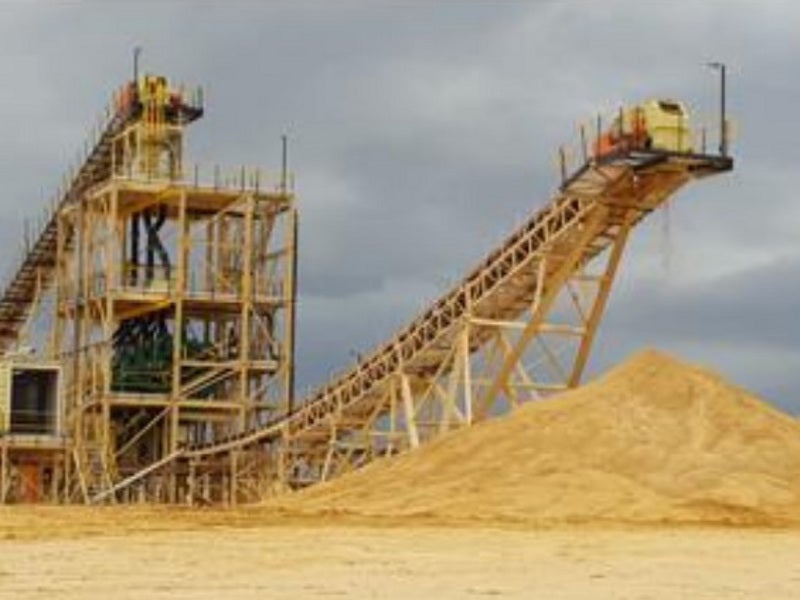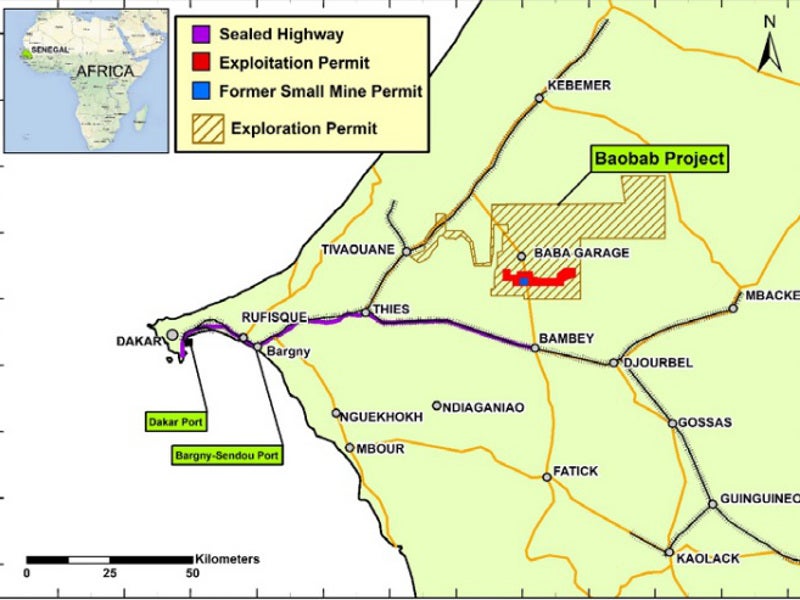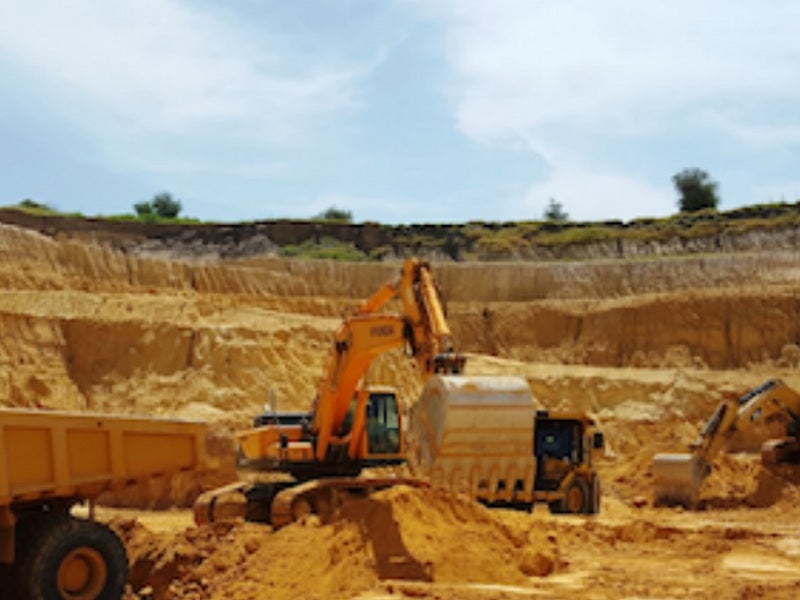The Baobab phosphate project is a high-grade phosphate rock project located approximately 140km from Dakar, the capital city of Senegal, West Africa.
Baobab Mining and Chemicals Corporation (BMCC), an 80% owned subsidiary of Avenira, fully owns the project.
Construction of the Baobab mine began in 2016 while phosphate production started in September 2016. BMCC made a decision to increase the existing Gadde Bissik ore beneficiation plant capacity to one million tonnes per annum (Mtpa) in 2017 as part of the expansion project.
BMCC completed the feasibility study (FS) of the expansion project in March 2019 and plans to conduct a value-engineering study and a bankable feasibility study (BFS). The final investment decision (FID) is anticipated to be made in the first half of 2020.
The overall production from the mine is expected to be 13.2Mt of phosphate rock concentrate, graded at 36.4% P2O5. The mine life is anticipated to be 13.4 years.
Baobab phosphate project background
Agrifos initiated the Baobab phosphate project development in 2011. Avenira joined the project development in 2014 and gained complete project ownership by September 2015.
Following the acquisition, Avenira conducted several development works, secured environmental and community approvals, and made a decision to mine in November 2015.
The Senegalese Government will receive a 10% free carried interest in the project, upon granting the post-exploitation permit. Avenira’s ownership will decrease to 72% following the receipt of the permit.
Baobab phosphate project geology and mineralisation
The Baobab project comprises the Gadde Bissik phosphate deposit and is made up of Eocene rocks belonging to the Senegal Sedimentary Basin.
The host phosphatic sediments comprise sands, conglomerates and gravels, basement marls, marly clays, and limestones.
Mineralisation at the project is believed to be formed by the deposition of the remains of benthic and planktonic organisms. The eastern section of the Senegal Sedimentary Basin hosts high significance phosphate deposits, in proximity to Mali and Mauritania.
Baobab phosphate project reserves
The probable mineral reserves of the Senegalese project are estimated to be 39.3 million tonnes (Mt), grading 18.9% phosphorus pentoxide (P2O5). Contained reserves are estimated to be 7.44Mt of P2O5.
Mining and ore processing at the Baobab phosphate project
BMCC proposes to apply the conventional open-pit method of mining, using a combination of excavators and dump trucks, at Baobab. The initial mine plan involves strip-mining, using dozers, excavators and trucks, to extract ore from the Gadde Bissik deposit.
The processing plant will have a throughput capacity of 2.9Mtpa and proposes to employ conventional flotation and magnetic separation processes.
Ore from the mine will pass through a three-stage crushing (primary, secondary, and tertiary) circuit, with the tertiary unit operating in a closed circuit to produce a product size of -20mm.
The crushed material will be forwarded to the magnetic separation and flotation circuits, with the final concentrate conveyed to a three-stage dewatering process. The resultant product will be filtered by using a horizontal vacuum belt, followed by rotary drying.
The dry rock phosphate from the rotary unit, with ±3% moisture content, will be stored on a covered stockpile. It will be transported by trucks to the Port of Dakar, for export to customers.
Financing of the Baobab phosphate project
Avenira plans to develop the expansion project through a combination of debt and equity. It is estimated to require between A$11m ($8m) and A$14m ($10m) in working capital.
Avenira reached an agreement with its three major shareholders Agrifos Partners, Tablo Corporation, and Agrifields DMCC for a loan of A$1.14m ($0.8m).
Infrastructure facilities
The Baobab phosphate project can be reached through a secondary gravel road running through the exploitation permit from Baba Garage and Bambey.
Power will be supplied from the 90kV high-transmission national distribution grid operated by Senelec at the Mékhé transformer station. A 30km-long high-transmission connection line will be constructed for the same.
Existing boreholes in the region will be the primary source of water for the project, while cyclone overflow from the thickeners and clarifiers will be recycled to provide process water.
Contractors involved
Hatch was engaged for the conceptual study of the phosphate project while Wood was involved as lead engineering consultants for the feasibility study.
Avenira prepared the feasibility study with support from consultants such as Mineral Resource Associates Phosphate Beneficiation, FLSmidth, Mintek, Outotec, and Eriez Manufacturing.
MPR Geological Consultants (MPR) conducted mineral resources estimate study as part of the FS. It also reviewed the drilling results of the Gadde Bissik deposit.





